The design of the plasterboard ceiling can be any, have different shapes - straight, bent, round, oval. In any interior style, plasterboard ceilings will be appropriate, and will allow you to solve a number of both technical and aesthetic problems.
Design of plasterboard ceilings in the kitchen
Before proceeding with the design of a plasterboard structure, it is necessary to take into account a number of technical conditions. For example, equipping the work area with a hood requires an air duct above it, and this must be provided. If you plan to build in luminaires, the distance between the ceilings and the drywall should be chosen taking into account the size of these luminaires.
The work begins with an assessment of the size of the room and the shape of the ceiling. Then determine the number of levels and their location depending on the chosen style and functionality. Next, the color and the way in which the ceiling surface will be finished is selected. The final stage of work on the design of plasterboard ceilings in the kitchen is the selection of lighting fixtures and decorative elements.
When choosing a color, you should be guided by the general design rules:
- In small rooms, it is better to use light colors;
- In spacious kitchens, rich dark shades are acceptable;
- Pastel colors will suit almost any interior style and add coziness;
- Bright, harsh colors can be detrimental to your well-being and mood.
Advice: If you want to emphasize visual zoning, make a suspended plasterboard ceiling in the kitchen at different levels - above each of the zones at its own height. Spotlights mounted in the ceiling along the border dividing the different heights will enhance the effect.
Single-level plasterboard ceiling in the kitchen
This is the simplest design, suitable for any space. Its surface can be plastered and painted - in this case, the ceiling will not differ in appearance from the traditional one, while retaining all its advantages.
Under the ceiling, you can remove communications, wiring or mount lamps. At the same time, the visual zoning of the kitchen can be emphasized by applying a different color or different texture over different zones. For example, the ceiling above the dining table may be light, and above the work area, it may be in a more saturated tone. This will draw attention to the dining area and ensure that it dominates the interior.
A plasterboard ceiling in the kitchen will also help to emphasize the allocation of zones, if you install lamps in it along the boundaries of these zones. Directed downward, the light will create a kind of "curtain of light", effectively highlighting this or that part of the room.
You can turn a simple ceiling into a masterpiece if you decorate it with three-dimensional drawings.You can create them yourself - and it's not difficult. Having applied the selected pattern to the surface, using liquid paper we draw it and dry it. After that, the drywall sheets are fixed in the selected places and painted in the usual way.
Plasterboard duplex ceiling in the kitchen
A structure made in two levels often provides more opportunities for obtaining a spectacular interior or solving technical problems that arise when renovating such a complex room as a kitchen. The protruding parts will hide large elements of communications, for example, air ducts, or large recessed luminaires.
The combination of parts of different heights will add volume and allow you to solve interior problems. The higher parts of the structure are often located in the kitchen work area or in the center. They can have a wide variety of shapes, depending on the chosen design. Often, oval and rectangular elements are combined in plasterboard ceilings in the kitchen. There are also combinations of plasterboard elements with stretch ceilings. This diversifies the interior and brings a zest to it.
Multilevel plasterboard ceiling in the kitchen
If elements of plasterboard construction are used, located in three or more levels, such a ceiling is called multi-level. Most often it is used in spacious kitchens with high ceilings - from three meters or more.
This is especially true in cases where the ceiling height exceeds four meters, which is usually for old-built apartments, especially "Stalinist" ones. Not too large in area, but having a significant height, such rooms look disproportionate, and the multi-level ceiling allows you to correct the proportions and make the room more comfortable.
Such ceilings can hide large differences in the height of the ceiling, significant defects in it, and also remove ceiling beams or ventilation boxes from the eyes. With their help, you can place accents, for example, emphasize the exclusivity of kitchen furniture.
Plasterboard ceiling in the kitchen: pros and cons
There are many advantages of plasterboard structures, we will list the main ones:
- Hide wiring and communications;
- Remove irregularities and defects in ceiling ceilings;
- Help to carry out visual zoning;
- Give individuality to the interior;
- Provide the ability to install spot ceiling lights flush with the ceiling;
- Provide additional sound insulation;
- Do not change when the building settles, do not crack;
- Provide unlimited design possibilities.
In addition to the obvious advantages, there are also disadvantages, and they must be taken into account when deciding on the decoration of the ceiling.
- When installing a plasterboard structure, it is lost from 7 cm in height;
- Installation requires skills and is carried out by specialists;
- Over time, the joints between drywall boards can crack.
Illuminated plasterboard ceiling in the kitchen
Well-chosen lighting schemes can completely change the room, make it more spacious, highlight individual parts, and focus on the main areas. Spotlights that can be installed in the ceiling can serve as the main lighting, or be aimed at specific places in the room.
An interesting option is the eaves lighting of the ceiling. In this version, the cornice is glued to the wall at a distance of several centimeters from the ceiling, and an LED strip is laid behind it. The power and color of this backlight may vary. The illuminated ceiling seems to be higher, and the room itself acquires additional volume. Directional light from built-in sources can create an interesting play of light and shadow that transforms the interior.
Plasterboard ceiling in a small kitchen
The small size of the kitchen area cannot interfere with the use of plasterboard ceiling structures. You just need to choose the right look and design.
- If the height of the kitchen is low, choose a single-level ceiling - it will "eat" less than centimeters, which already count.
- A well-thought-out lighting scheme, as well as the use of cornice lighting, will help to complicate the single-level ceiling and make it more effective.
- Light colors for painting the ceiling will help to visually enlarge the room.
- The use of glossy textures on the ceiling will visually increase the volume of the room.
Advice: If the height of the kitchen is low, but you want to have a ceiling in two levels, add a wide decorative cornice to the usual single-level ceiling, placing it slightly below the main level. The lighting behind the cornice will help create the necessary impression.

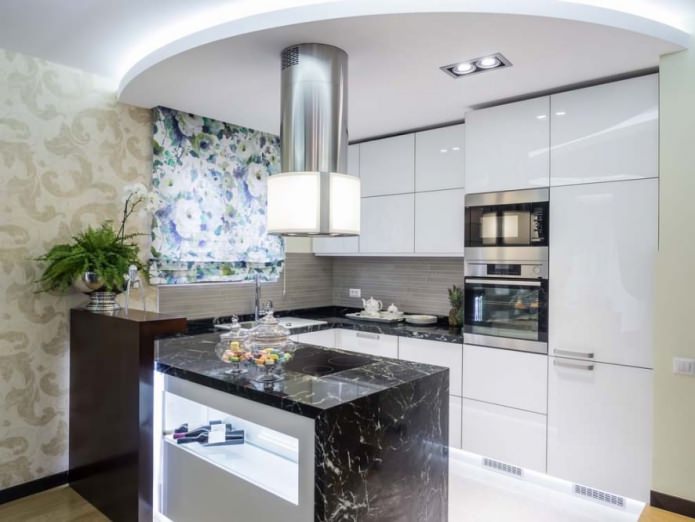
 10 practical tips for arranging a small kitchen in the country
10 practical tips for arranging a small kitchen in the country
 12 simple ideas for a small garden that will make it visually spacious
12 simple ideas for a small garden that will make it visually spacious
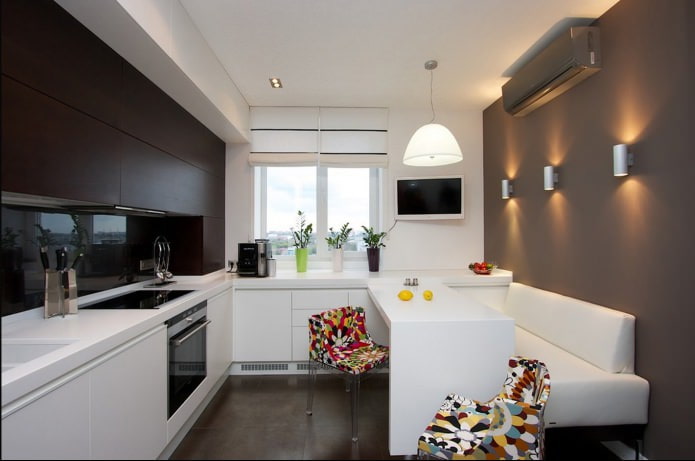
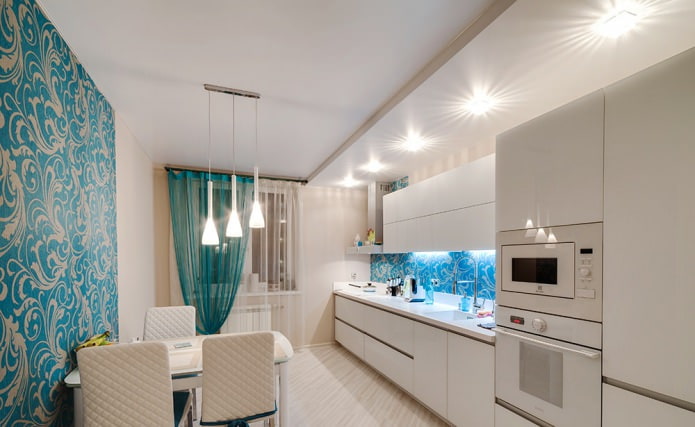
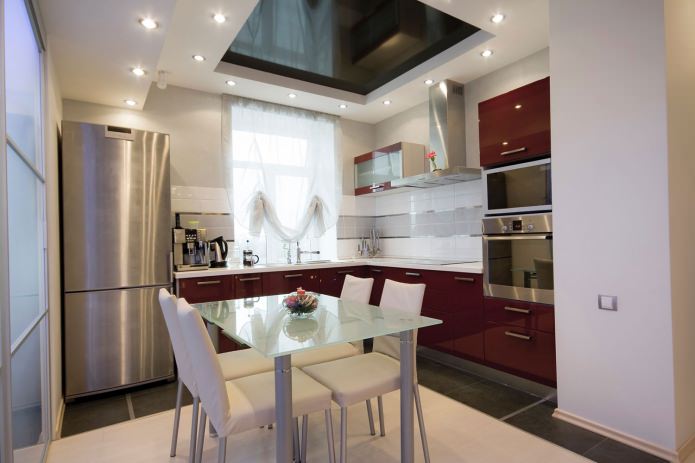
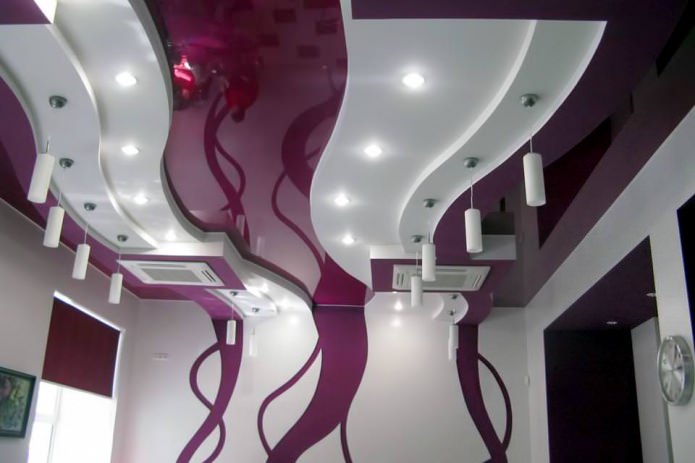
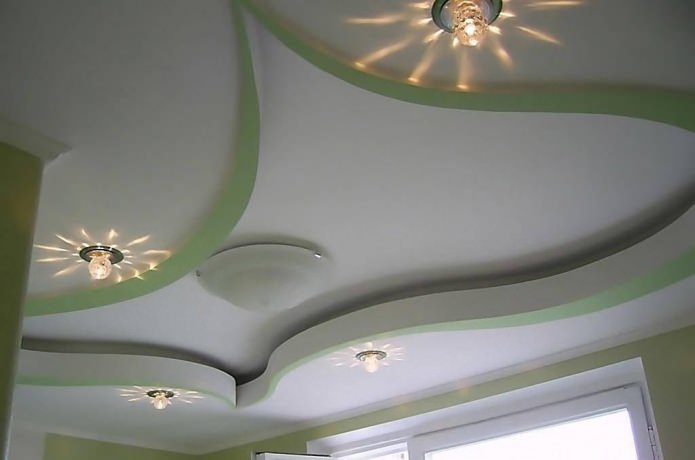
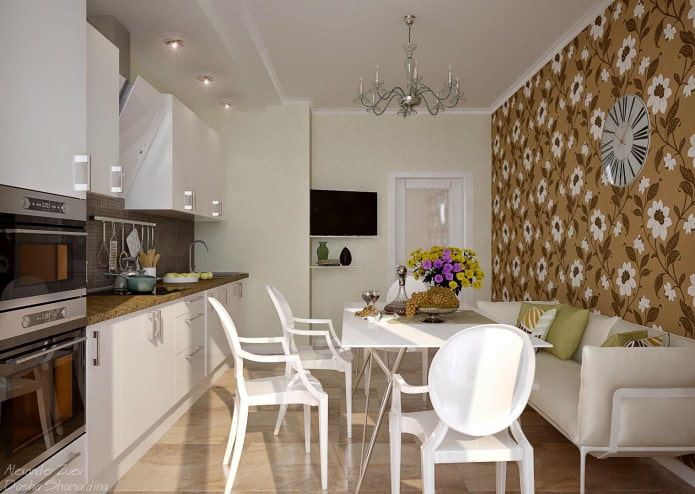

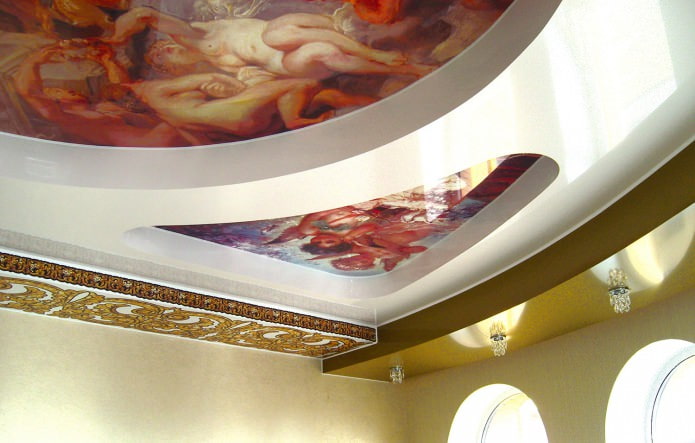
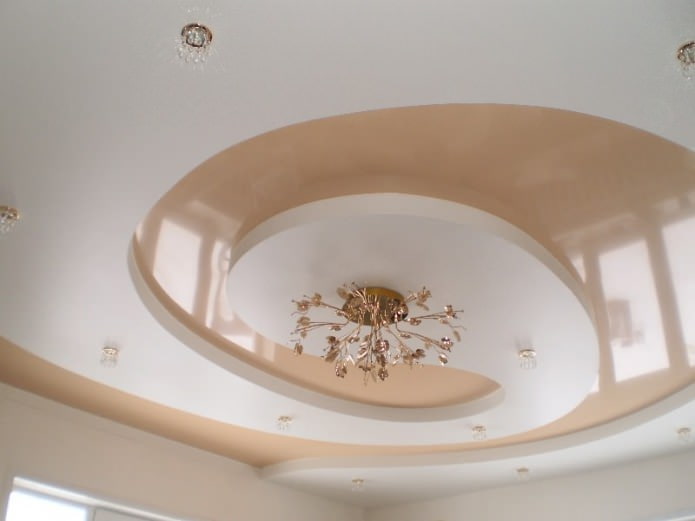
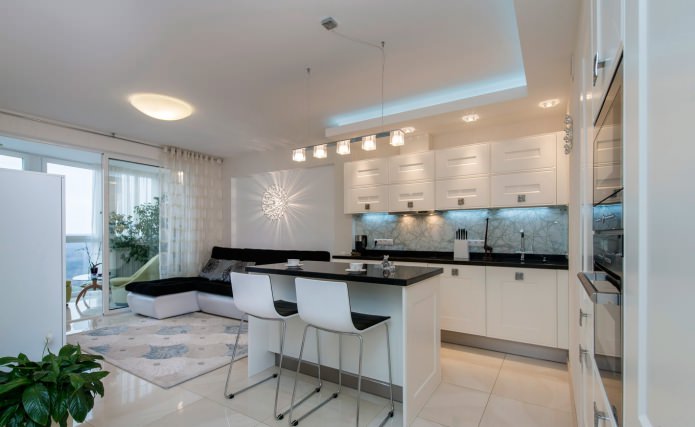
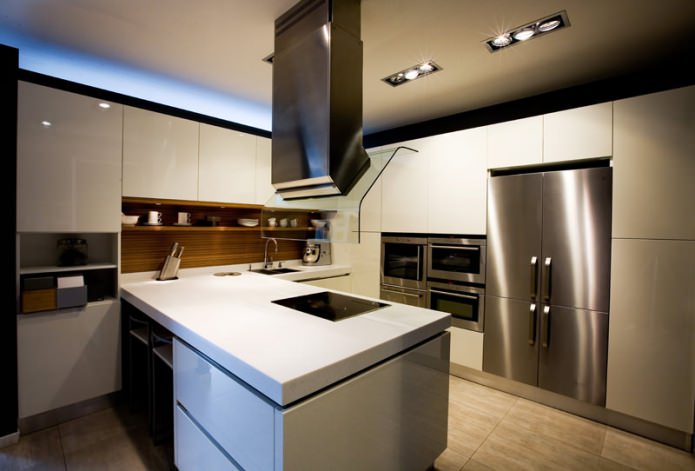

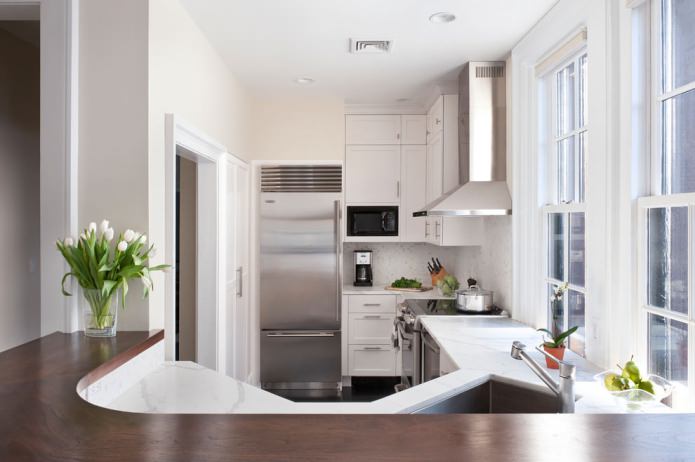
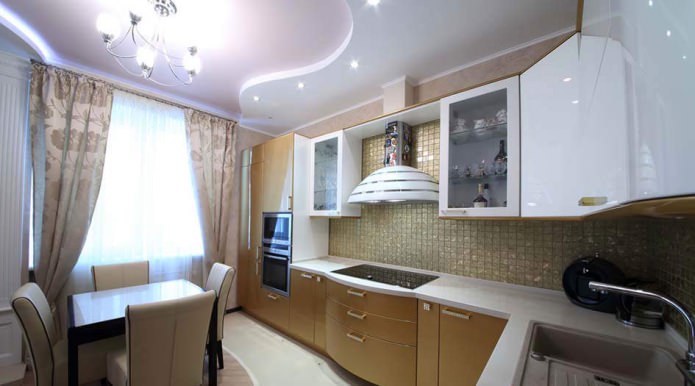
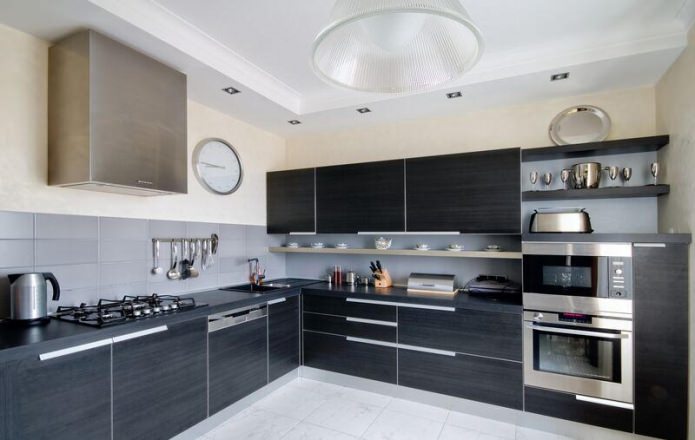
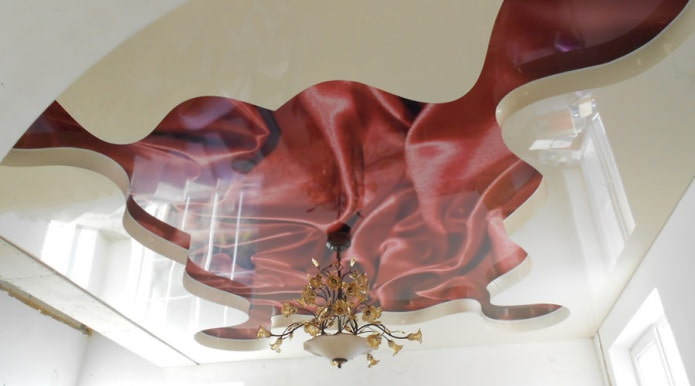
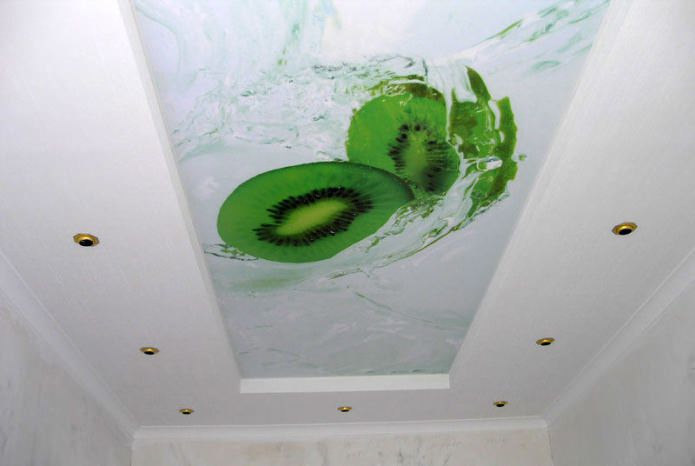
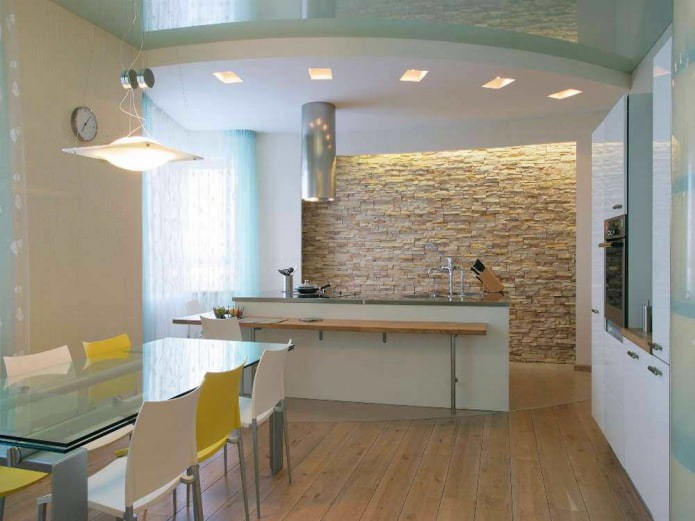
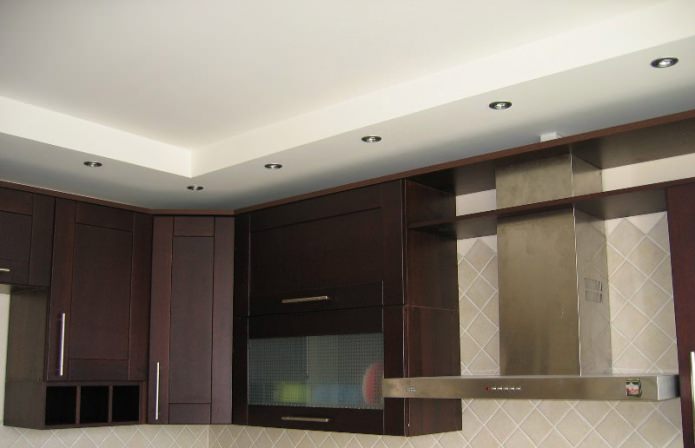
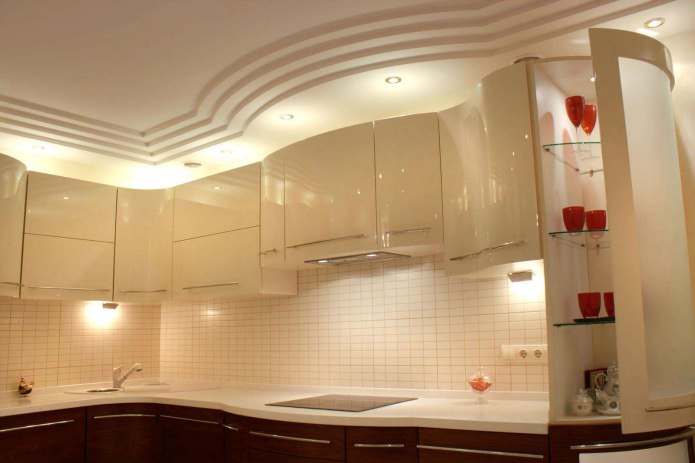
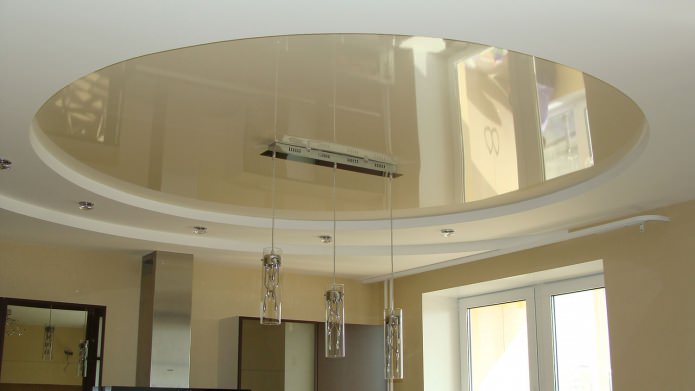

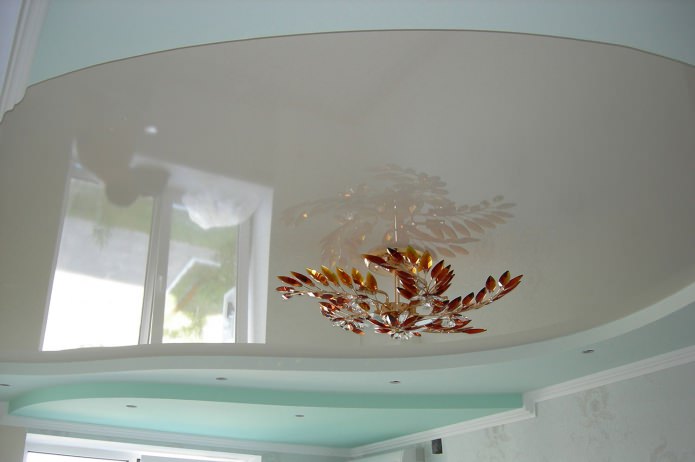
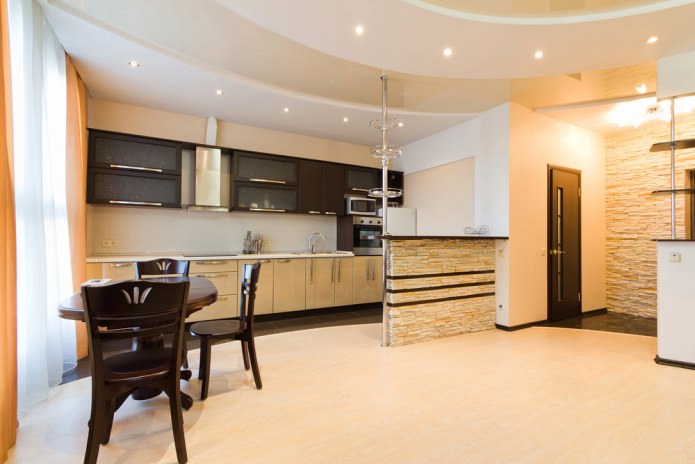
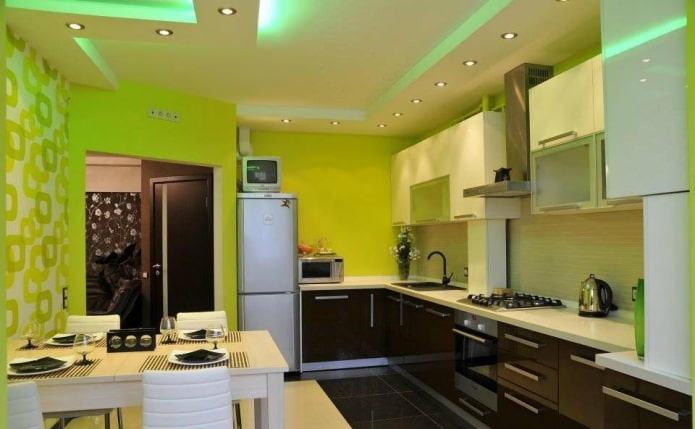


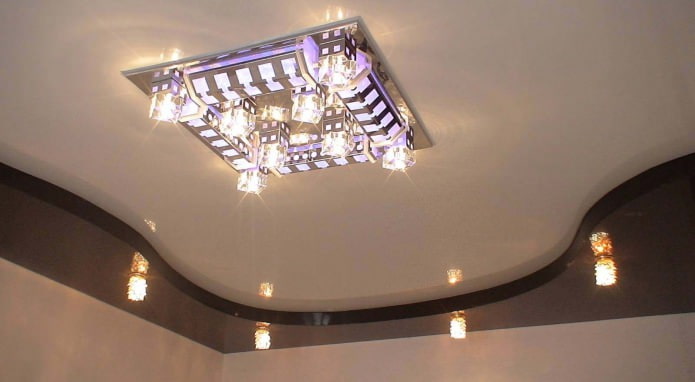
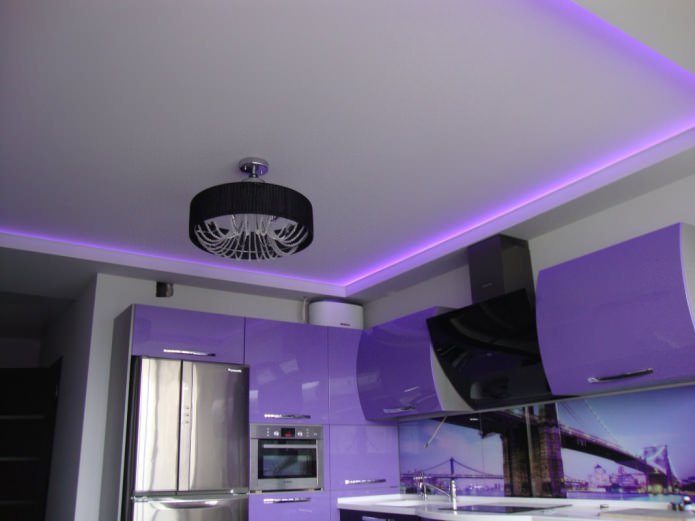
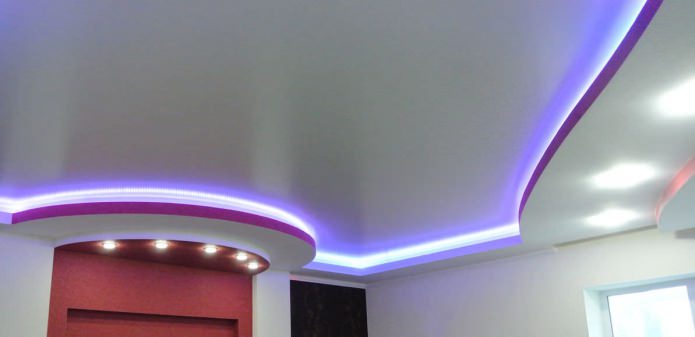

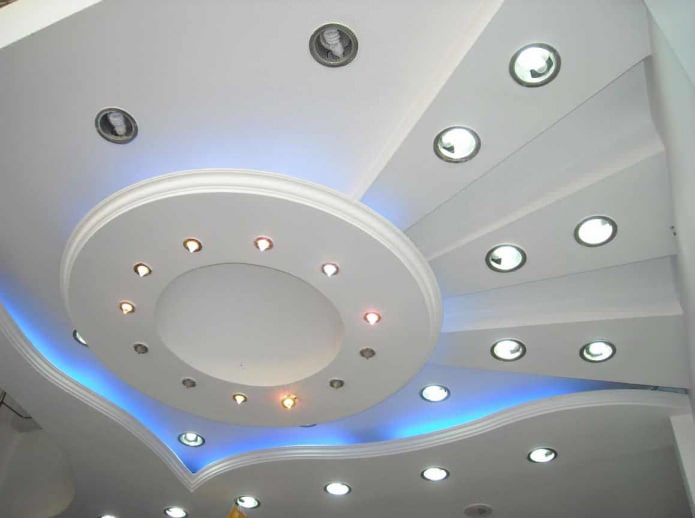

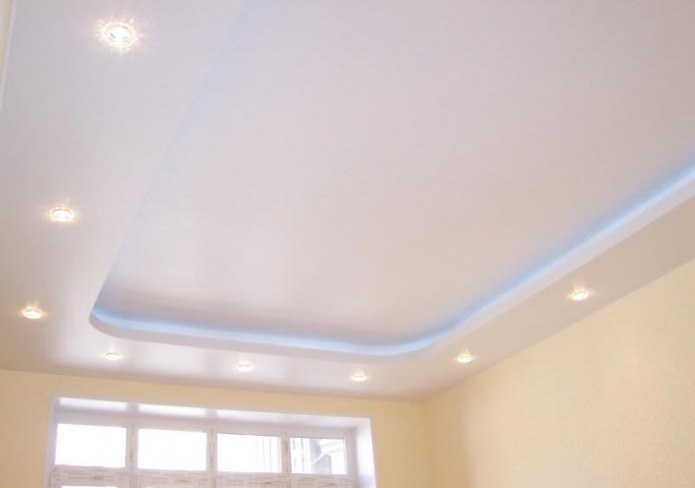
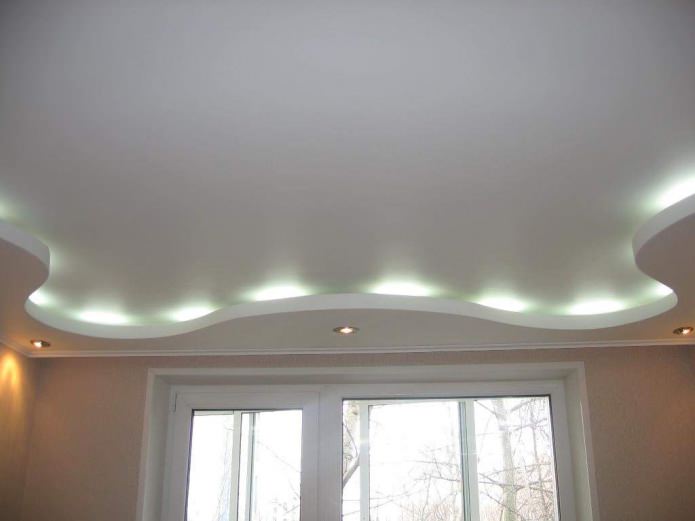
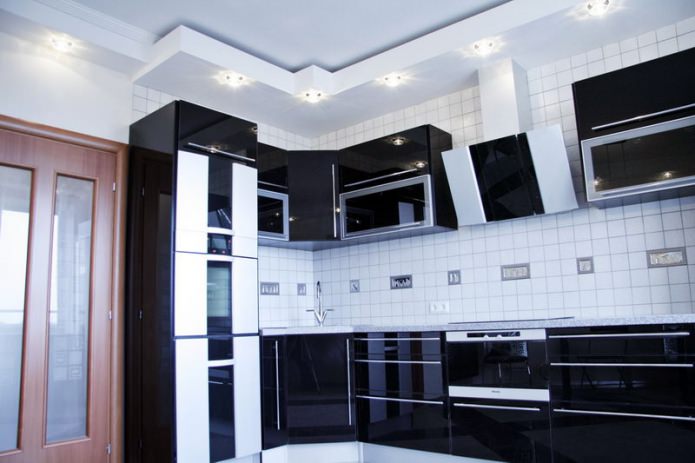
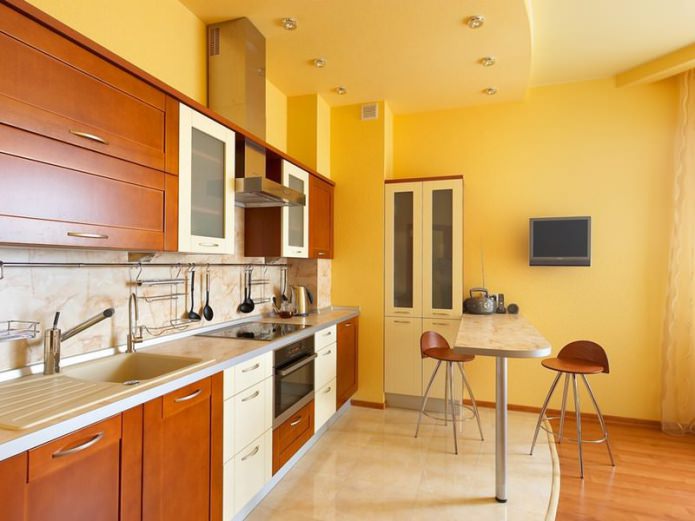
 How to choose the color of your kitchen sink?
How to choose the color of your kitchen sink? White kitchen set: features of choice, combination, 70 photos in the interior
White kitchen set: features of choice, combination, 70 photos in the interior Black set in the interior in the kitchen: design, choice of wallpaper, 90 photos
Black set in the interior in the kitchen: design, choice of wallpaper, 90 photos How to choose curtains for the kitchen and not regret it? - we understand all the nuances
How to choose curtains for the kitchen and not regret it? - we understand all the nuances Design of a white kitchen with a black countertop: 80 best ideas, photos in the interior
Design of a white kitchen with a black countertop: 80 best ideas, photos in the interior Kitchen design with green wallpaper: 55 modern photos in the interior
Kitchen design with green wallpaper: 55 modern photos in the interior